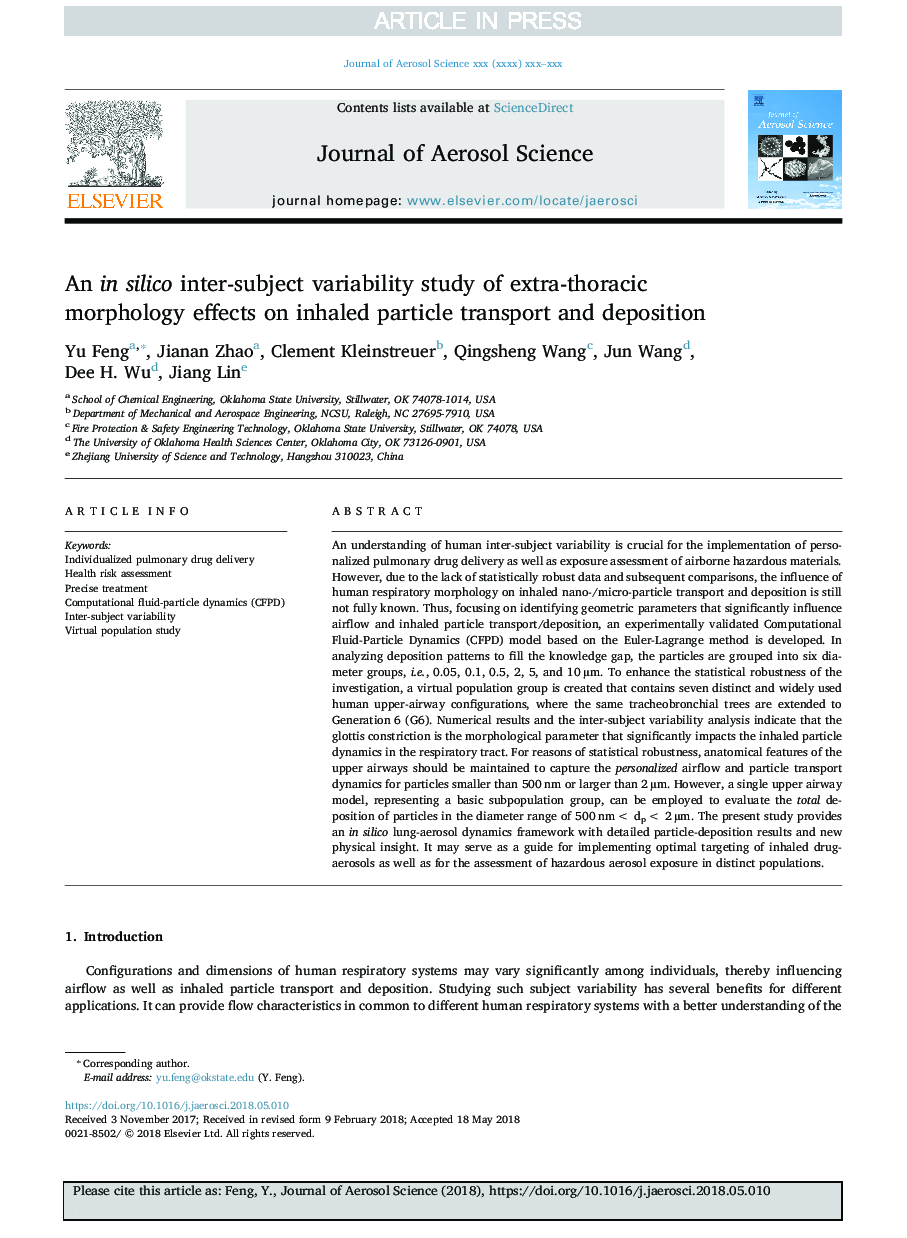| کد مقاله | کد نشریه | سال انتشار | مقاله انگلیسی | نسخه تمام متن |
|---|---|---|---|---|
| 8865229 | 1620700 | 2018 | 23 صفحه PDF | دانلود رایگان |
عنوان انگلیسی مقاله ISI
An in silico inter-subject variability study of extra-thoracic morphology effects on inhaled particle transport and deposition
ترجمه فارسی عنوان
مطالعه ای در مورد تغییرات بینابینی سیلیکا بین گروهی اثرات مورفولوژیکی اضافی بر روی حمل و نقل ذراتی استنشاقی و رسوب
دانلود مقاله + سفارش ترجمه
دانلود مقاله ISI انگلیسی
رایگان برای ایرانیان
موضوعات مرتبط
مهندسی و علوم پایه
علوم زمین و سیارات
علم هواشناسی
چکیده انگلیسی
An understanding of human inter-subject variability is crucial for the implementation of personalized pulmonary drug delivery as well as exposure assessment of airborne hazardous materials. However, due to the lack of statistically robust data and subsequent comparisons, the influence of human respiratory morphology on inhaled nano-/micro-particle transport and deposition is still not fully known. Thus, focusing on identifying geometric parameters that significantly influence airflow and inhaled particle transport/deposition, an experimentally validated Computational Fluid-Particle Dynamics (CFPD) model based on the Euler-Lagrange method is developed. In analyzing deposition patterns to fill the knowledge gap, the particles are grouped into six diameter groups, i.e., 0.05, 0.1, 0.5, 2, 5, and 10â¯Âµm. To enhance the statistical robustness of the investigation, a virtual population group is created that contains seven distinct and widely used human upper-airway configurations, where the same tracheobronchial trees are extended to Generation 6 (G6). Numerical results and the inter-subject variability analysis indicate that the glottis constriction is the morphological parameter that significantly impacts the inhaled particle dynamics in the respiratory tract. For reasons of statistical robustness, anatomical features of the upper airways should be maintained to capture the personalized airflow and particle transport dynamics for particles smaller than 500â¯nm or larger than 2â¯Âµm. However, a single upper airway model, representing a basic subpopulation group, can be employed to evaluate the total deposition of particles in the diameter range of 500â¯nm <â¯dp <â¯2â¯Âµm. The present study provides an in silico lung-aerosol dynamics framework with detailed particle-deposition results and new physical insight. It may serve as a guide for implementing optimal targeting of inhaled drug-aerosols as well as for the assessment of hazardous aerosol exposure in distinct populations.
ناشر
Database: Elsevier - ScienceDirect (ساینس دایرکت)
Journal: Journal of Aerosol Science - Volume 123, September 2018, Pages 185-207
Journal: Journal of Aerosol Science - Volume 123, September 2018, Pages 185-207
نویسندگان
Yu Feng, Jianan Zhao, Clement Kleinstreuer, Qingsheng Wang, Jun Wang, Dee H. Wu, Jiang Lin,
